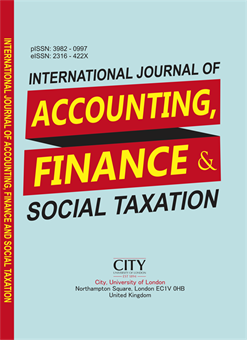INTERNATIONAL JOURNAL OF ACCOUNTING, FINANCE AND SOCIAL TAXATION (IJAFST)
Application of Market Timing Theory: Evidence from Canadian Firms
E-ISSN: 2316-422X
P-ISSN: 3982-0997
DOI: https://iigdpublishers.com/article/305
Internal and external finance are the two primary forms of funding for businesses. Internal financing is derived from retained profits, while external financing may come through borrowing money or the issuance of stocks. Businesses utilize it constantly to grow and stay alive, so the choices they make about finance are crucial. Market timing is vital for determining the appropriate financial structure for a company's success because volatility in market valuation greatly affects the
capital structure. Capital structure requires a decision-making tactic that is an art to tackle complex situations. Modigliani and Miller started this ground-breaking study on capital structure in the field of corporate finance in 1958. After that, several theories were developed, but one of those theories was the market timing theory of capital structure, which explains that firms issue new stock when their share price is overvalued and repurchase shares when their share price is undervalued. These price fluctuations of equity will affect corporate financing decisions and ultimately corporate capital structures. The goal of this study is to test the applicability of market timing theory in the context of Canadian firms; thus, the data have been collected from the FINVIZ Stock Screener for the period (2022) and analyzed by a generalized linear model technique through the E Views 13. The research concludes that the market-to- book ratio has a statistically significant negative effect on market leverage as well as book leverage.
Humayun Humta & Hamayoun Ghafourzay
Abdeldayem, M. M., & Assran, M. S. (2013). Testing the market timing theory of capital structure:
The case of Egypt. International Research Journal of Finance and Economics, 1.
Agyei, J., Sun, S., & Abrokwah, E. (2020). Trade-off theory versus pecking order theory: Ghanaian
evidence. Sage Open, 10(3), 2158244020940987.
Ahmadimousaabad, A., Bajuri, N., Jahanzeb, A., Karami, M., & Rehman, S. (2013). Trade-off theory,
pecking order theory and market timing theory: a comprehensive review of capital structure
theories. International Journal of Management and Commerce Innovations, 1(1), 11-18.
Ahmeti, F., & Prenaj, B. (2015). A critical review of Modigliani and Miller’s theorem of capital structure. International Journal of Economics, Commerce and Management (IJECM), 3(6).
Allini, A., Rakha, S., McMillan, D. G., & Caldarelli, A. (2018). Pecking order and market timing
theory in emerging markets: The case of Egyptian firms. Research in international business
and finance, 44, 297-308.
